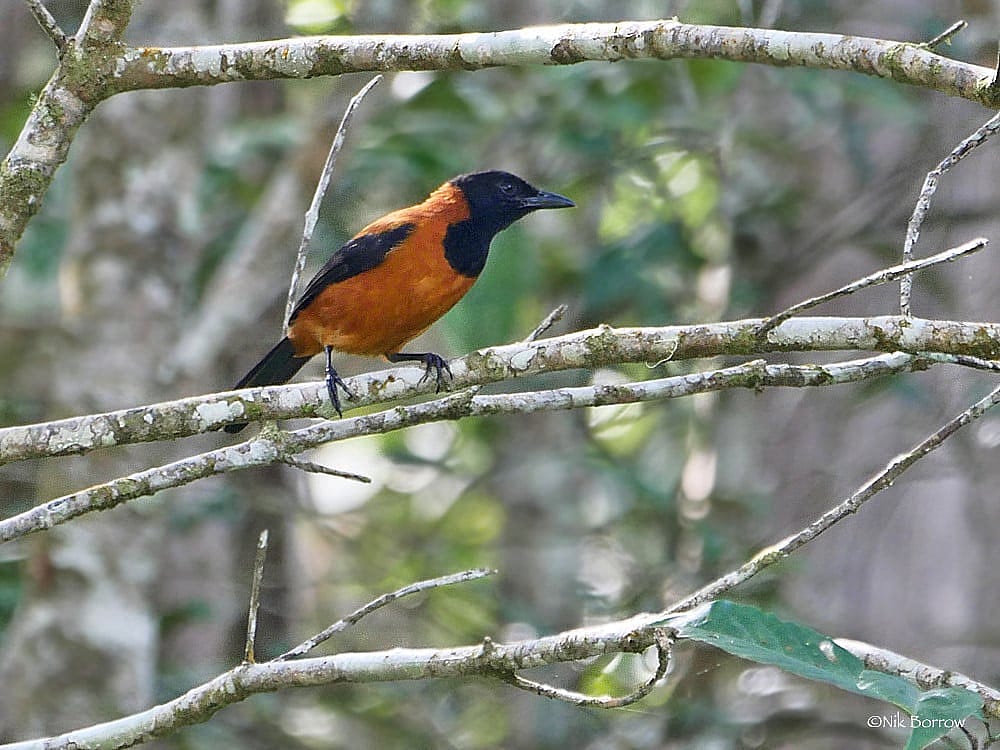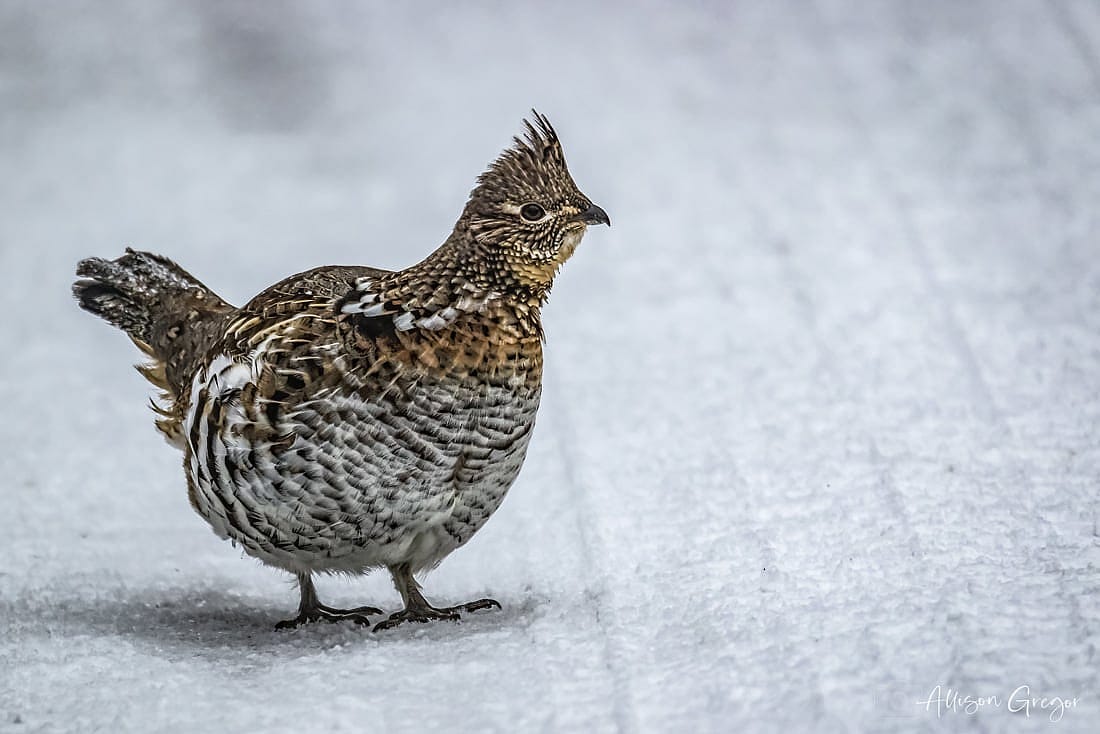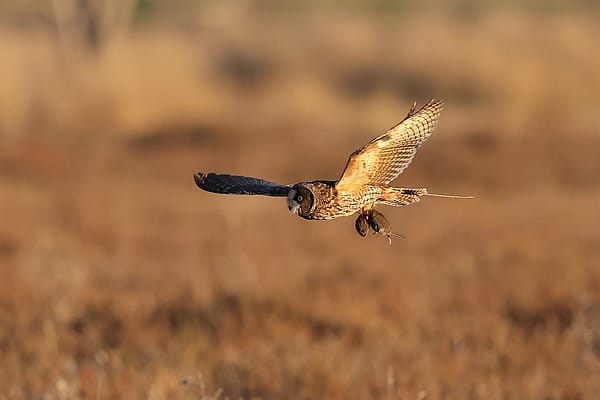
Poisonous Birds

When people think of poisonous animals birds do not typically come to mind. Nevertheless there are a few birds that are poisonous. In his blog I will discuss six poisonous birds from around the world and why they are poisonous.
Poisonous vs. Venomous
The Ivy is Poisonous While a Rattlesnake is Venomous

Venomous animals inject a toxin when they attack an enemy or prey. On the other hand, a poisonous animal unloads a toxin when they themselves are bitten, eaten, or touched. Poisonous birds are therefore not venomous.
Hooded Pitohui
One of the most poisonous birds is the Hooded Pitohui of New Guinea. Although this is a beautiful bird, its skin and feathers contain a large quantity of the neurotoxin known as batrachotoxin. This is the same type of poison found in dart frogs. Scientists believe that this is a defense adaptation.
Pitohuis do not produce this toxin themselves. Instead they obtain it from their diet. Pitohuis dine on the poisonous Choresine Beetle. Consequently, the poison will concentrate in their feathers and skin. As a result, a predators would likely avoid dining on Pitohuis.
Humans also find the Hooded Pitohui unpleasant. If you make the mistake of touching one of these birds, you may experience a numbness and tingling in your hands. You may also experience skin burns and sneezing.
Scientists speculate that the Hooded Pitohui may also rub the toxin on their eggs and chicks, thus protecting them from predators.
To find out a little more about these birds check out this short video:
https://www.youtube.com/watch?v=AUsXCqt5X0k
Blue-capped Ifrita Bird
The Blue-capped Ifritia is another bird found in the same area of the world as the Hooded Pitohui. Its poisonous attribute is very similar to the Pitohui. As an insect eater the Blue-caped Ifrita consumes poisonous beetles. Therefore this is another bird that contains batrachotoxins. In the Ifrita the toxins heavily concentrate on their bellies, upper leg feathers, and breasts. As one would expect this will ward off predators. Plus this is vital to repelling parasites.
Scientists believe the females rub their underbellies on their eggs. Consequently this applies the toxins to the eggs. As a result, this then repels egg eating predators.
If you touch this bird you will experience skin irritation such as itching, burning, and numbness. This irritation can last for a number of hours.
Warning! You May Not Want to Eat This Bird
European Quail, also known as Common Quail, are migratory birds found across Europe, Africa, and Southern parts of Asia. These birds may be poisonous if eaten. Within this area most cases of this poisoning, known as coturnism, are found in Greece. While this is true, poisoning due to quail consumption is rare. This is partly due to the fact that these quail are only poisonous during their autumn migration from north to south. Interestingly, they are not poisonous during their northern return flight in spring or any other time of the year.
There is some debate as to the cause of this poisoning, although many resources report that it is likely due to consuming hemlock seeds along the way. A lesser suggestion is that coturnism may originate from the toxic seeds of the Slachys Annua mint plant.
The Journal of Emergence of Medicine reports that four known cases of poisoning from quail consumption experienced, “some combination of symptoms including muscle tenderness, extremity pain, nausea, and vomiting.” After hospitalization these patients did survive.
Potentially this condition could also cause paralysis, kidney failure, and possible cardiac arrest.
Another Bird, Closer to Home You May Not Want To Eat
Ruffed Grouse poisoning has been reported in the United States since 1886 continuing into the 19th century. During this time, Ruffed Grouse were often hunted and eaten year round. When patients were observed by physicians it was reported that the onset of symptoms would typically emerge 30 – 40 minutes after consuming the bird. Possible symptoms are nausea, dizziness, vomiting, numbness, paralysis, and vision impairment.
Most documented cases were reported in winter, especially in February, though not all people were effected by it. Full recovery for some victims was within 24 hours, while others took several weeks. In four documented cases the patients died.
Unsurprisingly, the poison is thought to arise from the grouse’s diet. In the winter the grouse often feed on mountain laurel buds. These contain the toxic chemicals andromedotoxin and arbutin. These chemicals do not seem to effect the birds, but are toxic to mammals.
Today there are no reports of poisoning by Ruffed Grouse. Why? Today’s hunting regulations are such that Ruffed Grouse are not hunted during the time when they are likely to become poisonous. Typically in Wyoming, Ruffed Grouse hunting season is from Sept. 1 – December 31. Because of this, hunters are avoiding the time of the year when these birds may present a dangerous hazard if eaten.
Bronzewing Pigeons

Bronzewing Pigeons live in southwest Australia. These birds have been documented as being very poisonous to several types of mammals. This also includes pets such as cats and dogs that make the mistake of killing and eating these birds. On the other hand, others seem to be immune to the toxins.
It is believed Bronzewings may even be linked to the decline and even extinction of some Australian mammals. Bonzewings become toxic with fluoroacetate, which is an ingredient often used in rat poisons. When ingested it can cause a range of reactions such as intense stomach pains, convulsions, excessive salivation, vomiting, diarrhea and even death.
Most likely this condition is due to their diet of consuming seeds from a variety of flowering plants such as wattle, shaggy pea, and acacia. This bird is only poisonous if eaten.
While researching this bird I could not find any data confirming human side effects or deaths due to Bronzewing Pigeons.
Spur-winged Goose
The Spur-winged Goose is another bird whose diet causes this phenomena.
This large goose resides in Africa and weighs up to 20 pounds. They are reported to be very aggressive. Therefore any animal that dares to enter its territory should beware. These birds have weapons to deal with transgressors. Each goose has a sharp spur on the wrist of their wings.
However, only in Gambia are Spur-winged geese sometimes poisonous. It’s the poisonous blister beetle they consume that adds to their defense. Like other poisonous birds, they are immune to the poisons. Their flesh, however, may well become toxic. As a result, these birds can be potentially deadly if eaten.
In Conclusion
True poisonous birds are vary rare. Even so, these birds are not born poisonous, rather they become poisonous due to diet or parental care. In some birds the condition may be seasonal, while others remain poisonous year-long. Birds that have developed the ability to acquire toxic chemicals in their bodies tend to become less palatable to predators. The danger to humans is fairly rare, yet their poisons can potentially produce serious side effects.
Photos:
Poison Ivy by JanetandPhil, Attribution-NonCommercial-NoDerivs
Timber Rattlesnake by Smashtonlee05, Attribution 2.0 Generic
Hooded Pitohui and Blue-capped Ifrita by Nik Borrow, Attribution-NonCommercial 2.0 Generic
European Quail, also known as Common Quail by Imran Shah, Attribution-ShareAlike 2.0 Generic
Ruffed Grouse by Allison Gregor, Attribution-NonCommercial-NoDerivs 2.0 Generic license
Bronzewing Pigeon by David Cook, Attribution-NonCommercial 2.0 license
Spur-winged Goose by Frans Vandewalle, Attribution-NonCommercial 2.0 Generic License
Blister Beetle by Judy Gallagher, Attribution 2.0 Generic License
Written By
Anne Hay
Anne Hay has a Bachelor's degree in Elementary Education and a Master's in Computers in Education. She spent most of her working years teaching third grade at Livingston School in Cody, Wyoming. After retiring she began doing a variety of volunteer work for the Buffalo Bill Center of the West’s Draper Natural History Museum. Anne loves nature and has a concern for the environment. She believes that educating the public, so that they will have a better understanding and appreciation for the natural world, is very important. Because of this belief, volunteering at the Center is a perfect fit. She spends time in the Draper Lab, observing eagle nests for Dr. Charles Preston’s long-term research project on nesting golden eagles, writing observation reports of raptor sightings in the Bighorn Basin, and working with the Draper Museum Raptor Experience. Anne states that, “Having a bird on my glove, is one of my all time favorite things in life.”


















